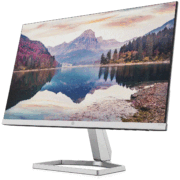Assessing for SpLD Series
by Jan Thomson-Long
SpLD Computer Screeners
“Computers have lots of memory but no imagination.” – Bill Gates
I’m a self-confessed geek! I love the history of computing and reflecting on the changes that they’ve enabled in our world. They’ve removed many tedious tasks and do them better than humans can as they are less error prone at monotonous tasks.
However, there are some things that are not as structured, and they don’t lend themselves to being computerised as easily. Great strides are being made with artificial intelligence (AI) which needs a deep understanding of the factors that an expert human considers and weighs up when coming to their decision.
Some aspects of the diagnosis of Specific Learning Differences (SpLD) do lend themselves well to computerisation. Screeners have been developed which can capture responses and measure the reaction time far better than a human could. Collection of standard replies to questions where there is only one right answer are another good example of a suitable use of a computer. However, the computer can’t (yet) observe if the test taker is fidgeting, distracted, upset or calm. All of these need to be observed by the assessor. They are important to be aware of, as is if the person being tested is actually counting rather than estimating for numeracy activities.
So, computerised screeners are useful tools within the arsenal of an assessor but should be used with care. The test taker needs to be observed during the screening and observations only visible to another human noted. The screener should not be used in isolation but as part of formulation of the picture of need. A history of difficulties. along with feedback from class teachers. are essential and manual screeners can add details that computerised ones cannot. The results need to be viewed in context. I’ve certainly had more than one instance where the computerised screener has said that no further testing was required when my observations and the history indicated otherwise and where the full investigation has led to a diagnosis of a specific learning difficulty. Human brains are each unique and individual with their own profiles. Computer screeners can only identify the aspects they’ve been programmed for and the brain is far more nuanced than the programs.
So, take the whole picture of need into account when looking at the report from a computerised screener.




